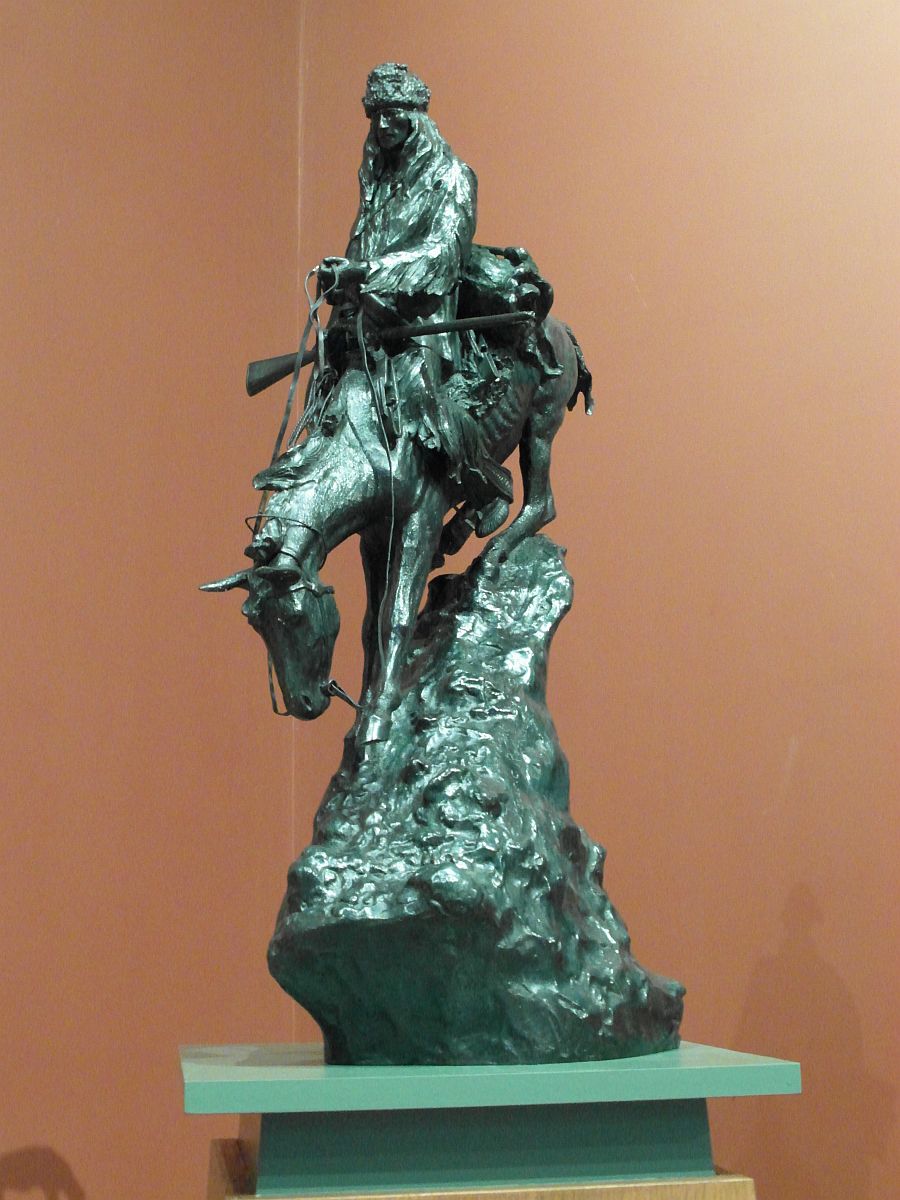
The deep-water channel of the St Lawrence now crossed to the northern (Canadian) side of the river, passing the appropriately-named Crossover Island. We however crossed the river to the south, rolling uncomfortably in the waves which we took broadside-on, to make a brief stop at Ogdensburg - home of the Frederick Remington art museum. Being unfamiliar with his work we nearly didn't make the rip ashore in the heavy rain and strong wind, but we were very glad that we did because there were many beautiful things to see. Some of his sketches of the American Old West were wonderfully perceptive, and we marvelled at the detail of his many bronze models of late 19th century horsemen.
Now we were in the main commercial lane of the busy St Lawrence, being guided by a local pilot, as we headed down this might waterway. Progress through some of the locks was particularly slow as we were in a queue of commercial ships for the whole day.
There are only seven locks on the St Lawrence Seaway between Montreal and Lake Ontario but they are all huge. Each measuring 770ft by 80ft wide (they would take over 120 full-length narrowboats at once) and having a depth of at least 33ft over the cills, the seven locks together raise the river by almost 250ft. They incorporated features such as the "stop cables" across the locks that we had first seen in Russia. Ships were required to enter the locks very slowly, so that in the event of an engine failure the cables could stop even a fully-loaded ship before it hit the gates! There were floating bollards in the lock walls to tie to, but on our little ship we ignored these and simply looped a single rope around one of the fixed bollards, paying it out by hand as we descended.
Continuing down this massive river, that night we reached Montreal. Canadian customs officers came on board to check everybody's passports, then the next day was spent in the city. While most of the ship's passengers took a coach tour of the city, we made our own exploration on foot because we would be having a longer coach tour when we returned to Montreal at the end of the trip. I will describe all our time in the city of Montreal, as well as our time in Quebec, on the next page of this story.
Another day at sea followed our departure from Montreal. The highlight of the day was a "celebration dinner" at which people were invited to nominate a reason for celebrating; as I had already celebrated my birthday on board I decided instead to celebrate the discovery of chocolate milk-shake porter. Most people thought this was a wonderful reason for celebrating, but a couple of old ladies accused me of "not taking things seriously" - I can only plead guilty to that one! Most impressive, however, was the fact that one wonderful couple were celebrating their 66th wedding anniversary on board the ship.
We passed under the great bridges of Quebec and learned how local Native American tribesmen of the Mohawk nation, mainly from the Caughnawaga or Akwesasne reservations near Montreal, had proved to be the most skilful of aerial construction workers. They were involved in the construction of the bridge here as well as virtually every other major bridge and skyscraper in New York state, but in a terrible accident in 1907 one of the cantilevers had collapsed killing 35 Mohawk workmen. This was such a significant percentage of the Mohawk workforce that the elders immediately decreed a limit to the number of workers who could be employed on any one project at the same time. The Akwesasne tribe ( who were the original inhabitants of the city that we now call Montreal) still have their own nation, straddling the St Lawrence near Quebec so that it is partly in Canada and partly in the USA; they issue their own passports and make their own laws, and are generally recognised by both Canada and the USA as an independent nation; indeed, in 2001 the international border at the bridge was formally renamed the 'Three Nations Crossing'.
We didn't stop at Quebec, but passed it during the evening and had ample time to admire the city including the magnificently floodlit Chateau Frontenac, a hotel that was built in the late 19th century on the site of the original Governor's mansion. It is such an impressive sight atop of the hill that many tourists stick doggedly to their belief that it is in fact the original mansion.
Continuing down the St Lawrence, we awoke to stunningly beautiful scenery the next morning as our ship turned into the Saguenay River. This river is one of North America's few genuine fjords; with such dramatically steep cliffs its origins are unmistakeable, and apparently it is over 1000 ft deep too! One of the most spectacular cliffs which with its three headlands is known as Cape Trinity, has an amazing echo - as our ship's captain demonstrated by slowing in front of it and loudly blowing the horn! The skies were grey by now so instead of posting my own pictures here I offer instead a link to a magnificent 19th-century painting of this landmark.
Returning to the mouth of the Saguenay we picked up a local naturalist for the afternoon, before venturing out into the St Lawrence for an afternoon's whale-watching. The water conditions at the meeting of these two very different rivers make it an ideal breeding ground for the Beluga Whale. Also known as the White Whale after their distinctive colouring, these whales were easily spotted from a distance but unfortunately we did not see them from close-up. We did however see a large number of Minke whales and one humpback as well as several seals whose cheeky heads kept popping up out of the water to look at us. Weather conditions were ideal for this afternoon, being very bright and sunny although bitterly cold; the ships crew brought large urns of hot drinks to the top deck to help us keep warm. Unfortunately by now my camera was misbehaving badly and I missed out on most of the good photo-opportunities.
 |
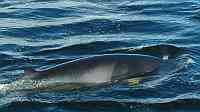 |
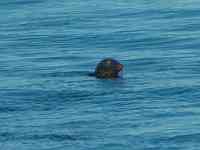 |
A humpback whale 'blows' in front of us |
This minke whale was very interested in us |
Cheeky seals heads kept popping up out of the water to take a look around |
Now it was time to return up-river to Quebec where we moored for nearly 24 hours. Our first destination by coach was the nearby Montmorency Falls, whose 275-ft drop makes the 165-ft drop at the Niagara Falls look rather pathetic.
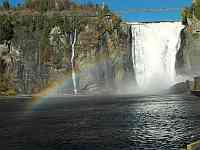 |
 |
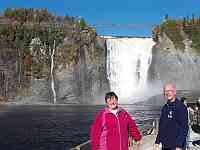 |
Sunlight and spray make a rainbow at Montmorency Falls |
From close-to the Falls, and the walkway across the top, are very impressive indeed |
An ideal spot for a photo-opportunity |
On leaving Quebec with the fast-flowing tide, we relaxed on board the ship for the journey back to Montreal. Soon we would be leaving this beautiful river ...but at least we would be able to enjoy these two wonderful cities before we had to fly home.
All pictures on this site are © Allan Jones unless otherwise stated